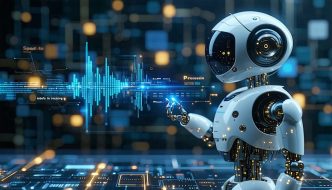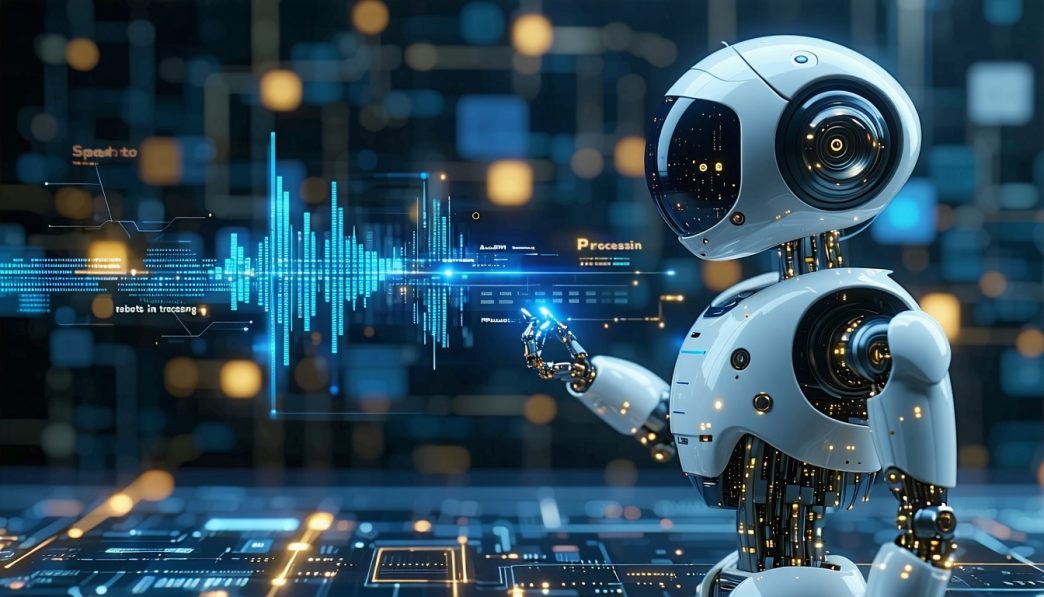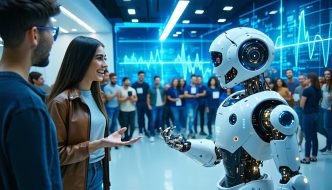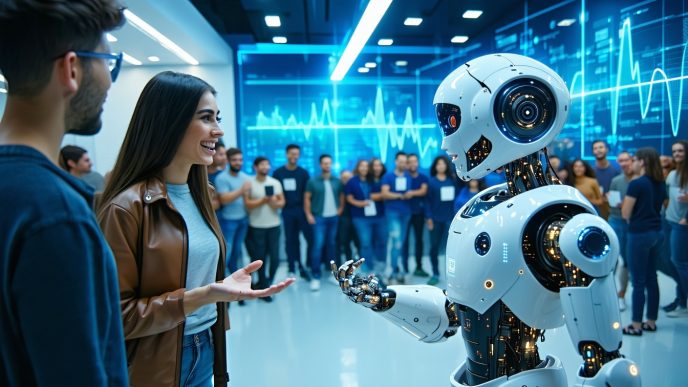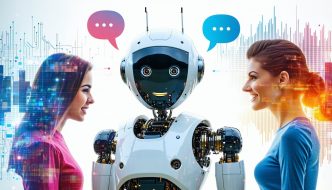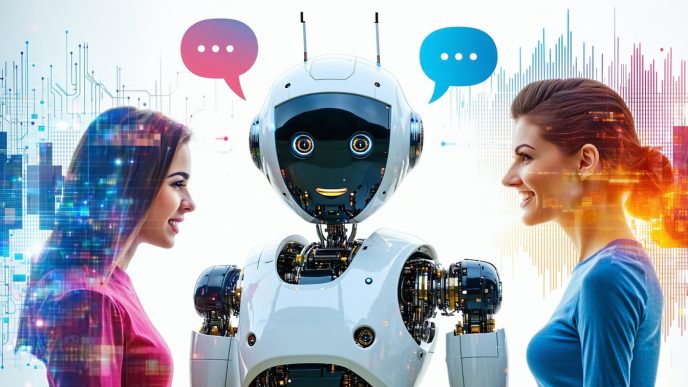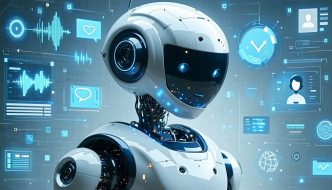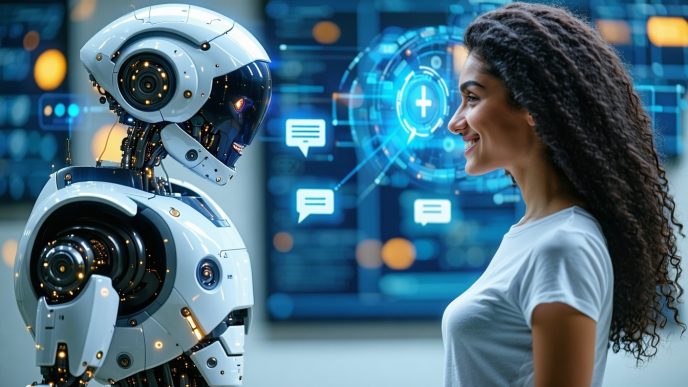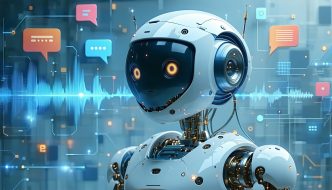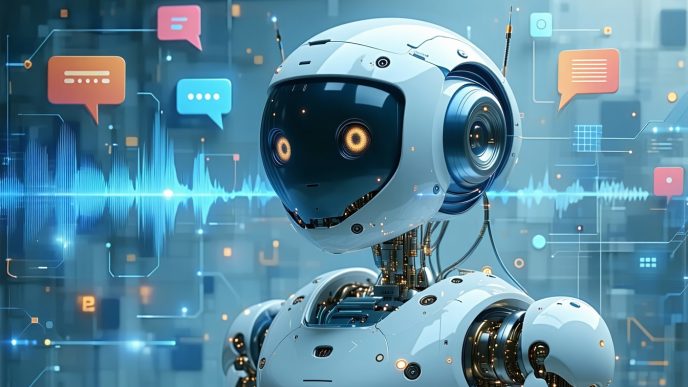Voice Interaction with Robots
Voice interaction represents a pivotal aspect of how robots engage with users. To facilitate this interaction, a combination of technologies enables robots to understand and process spoken commands effectively.
Understanding How Robots Process Voice Commands
Robots utilize various technologies to convert voice commands into actionable instructions. The process typically begins with a microphone capturing sound waves, which are then digitized and analyzed. The transformation of spoken language into text is achieved through sophisticated algorithms and models. This process is essential for effective communication between humans and machines.
The following components are crucial in processing voice commands:
| Component | Function |
|---|---|
| Microphone | Captures ambient sound and voice input. |
| Speech Recognition Software | Converts spoken words into text. |
| Natural Language Processing (NLP) | Interprets the meaning and intent behind the commands. |
| Action Execution Module | Executes the commands based on interpreted data. |
For a detailed look into the role of NLP, refer to the section on natural language understanding in robots.
Evolution of Speech to Text Processing in Robots
The journey of speech to text processing in robots has evolved significantly over the years. Early systems relied on limited vocabularies and were often unable to accurately capture the nuances of human speech. However, advancements in technology have led to more refined systems capable of understanding a wider range of commands and accents.
Key stages in the evolution of speech to text processing are summarized in the table below:
| Year | Development |
|---|---|
| 1952 | First voice recognition system, limited to digits. |
| 1970s | Introduction of basic continuous speech recognition. |
| 1990s | Growth of statistical models, improving recognition accuracy. |
| 2000s | Rise of machine learning, enhancing capabilities in real-time processing. |
| 2010s | Integration with AI and deep learning, allowing for natural conversation and context awareness. |
Current systems, enhanced with robot voice recognition and NLP, improve for user experience and interaction. This progress highlights the potential of robots to engage in more meaningful conversations and accurately respond to users.
As technology advances, robots will continue to refine their ability to understand human speech, making interactions smoother and more intuitive. For insights on future developments in this field, explore our article on the future of voice interaction with robots.
Natural Language Processing (NLP)
Introduction to Natural Language Processing
Natural Language Processing (NLP) is a crucial technology that allows robots to understand and interpret human language. By utilizing advanced algorithms and linguistic theories, NLP bridges the gap between human communication and machine comprehension. This enables robots to process voice commands efficiently, transforming speech into actionable tasks.
NLP involves several components, including syntax, semantics, and pragmatics. These elements work together to analyze sentence structure, word meanings, and contextual nuances, making it possible for robots to grasp the intent behind user requests. As NLP technology continues to advance, the capabilities of robots to understand and respond to voice instructions have significantly improved.
The process of speech to text processing in robots leverages NLP to convert spoken words into digital text, which is then analyzed for command execution. Notably, the use of NLP in robots enhances interaction quality, allowing for a more natural exchange of information.
| NLP Component | Description |
|---|---|
| Syntax | Analyzes the grammatical structure of sentences. |
| Semantics | Focuses on the meanings of words and phrases. |
| Pragmatics | Considers context and intended meaning behind communication. |
Application of NLP in Robotics
NLP plays a vital role in the functionality of many robotic systems used today. By enabling robots to understand human language, NLP facilitates a wide range of applications, from personal assistants to healthcare robots.
In smart homes, NLP allows robots to control devices, manage schedules, and provide assistance based on voice commands. Robotics enthusiasts benefit from this technology as it enhances user engagement and interaction. Additionally, in professional settings such as healthcare, NLP applications improve patient communication, enabling robots to collect data and assist healthcare practitioners effectively.
The integration of NLP in robotics also promotes learning, allowing robots to adapt their responses based on user behavior. Ongoing advancements in NLP technology ensure that robots are increasingly capable of natural conversations, making them more useful and dynamic.
| Application Area | Benefits |
|---|---|
| Smart Homes | Device control and task management through voice prompts. |
| Healthcare | Improved communication and data collection. |
| Customer Service | Enhanced interaction between customers and robotic assistants. |
For a more comprehensive understanding of NLP and its relationship with robot voice recognition, refer to our article on robot voice recognition and nlp. Understanding how NLP is applied can also help users appreciate advancements in natural language understanding in robots.
As technology progresses, families and tech adopters can anticipate improved voice command accuracy in robots and more sophisticated conversation capabilities in robots.
Machine Learning in Robotics
Machine learning plays a pivotal role in enhancing the capabilities of robots, particularly in the realm of speech recognition. This technology enables robots to effectively convert spoken language into text and subsequently interpret those commands.
Role of Machine Learning in Speech Recognition
At the core of speech-to-text processing in robots, machine learning algorithms analyze vast amounts of audio data to identify patterns and nuances in human speech. These algorithms learn to distinguish between different sounds, tonal variations, and accents, enabling robots to process voice inputs accurately.
The implementation of neural networks has significantly improved the accuracy of speech recognition systems. Various factors contribute to the effectiveness of these systems, including:
| Factor | Description |
|---|---|
| Data Quality | High-quality audio data used for training enhances model accuracy. |
| Algorithm Complexity | More complex algorithms can capture intricate patterns in voice data. |
| Training Duration | Longer training periods allow the model to learn more effectively. |
Furthermore, as robots encounter diverse speech inputs, they continuously improve by learning from past interactions. Through techniques such as supervised learning, robots can refine their understanding of voice commands, making them more efficient over time.
Training Robots to Understand Voice Commands
Training a robot to understand voice commands involves multiple stages. The process typically includes:
- Data Collection: Gathering a significant amount of voice data across various contexts and accents.
- Preprocessing: Cleaning and organizing the collected data to facilitate effective training.
- Feature Extraction: Identifying unique features in the speech data that help differentiate commands.
- Model Training: Using machine learning algorithms to train the robot to recognize patterns in the speech data.
The training of robots also encompasses understanding context and intent behind commands. By utilizing approaches such as natural language understanding (NLU), robots can interpret the meaning of phrases, allowing for more nuanced interactions. For additional details on this topic, refer to our article on natural language understanding in robots.
Additionally, challenges such as accent variations and user speech patterns can complicate the training process. Solutions such as training robots to understand accents help enhance their adaptability in different environments. As machine learning techniques continue to evolve, the future of voice interaction with robots appears promising, with advancements paving the way for more natural communication.
Voice Recognition Technology
Voice recognition technology plays a crucial role in enabling robots to interpret and respond to spoken commands effectively. This technology involves converting spoken language into text, allowing robots to understand and execute instructions.
Overview of Voice Recognition Technology
At its core, voice recognition technology utilizes complex algorithms and sophisticated models to process spoken words. Here’s a simplified view of how it operates:
- Sound Waves: The technology begins by capturing sound waves through a microphone.
- Audio Processing: The captured sound is converted into a digital format. This involves breaking down the audio into smaller components for better analysis.
- Feature Extraction: Key features of the audio, such as pitch and tone, are identified. This helps in distinguishing between different sounds and identifying words.
- Pattern Recognition: Machine learning algorithms compare the extracted features with linguistic models to interpret the words spoken.
- Text Output: The spoken words are then converted into text, ready for further processing and action by the robot.
| Step | Description |
|---|---|
| 1. Sound Waves | Captured through microphones |
| 2. Audio Processing | Converted to digital format |
| 3. Feature Extraction | Identifying pitch and tone |
| 4. Pattern Recognition | Comparing with linguistic models |
| 5. Text Output | Conversion to text for actions |
This flow outlines the basic operation of speech to text processing in robots, facilitating smoother interactions based on voice commands.
Implementing Voice Recognition in Robots
Integrating voice recognition into robots involves several steps and components. The following elements are essential for successful implementation:
-
Microphone Array: Multiple microphones can be used to enhance the robot’s ability to capture sound from various directions, improving clarity and accuracy.
-
Signal Processing Unit: This component is responsible for processing the incoming audio signal and preparing it for feature extraction.
-
NLP Engine: A Natural Language Processing engine interprets the recognized text. This engine is vital for understanding the context and intent behind voice commands. It also links to articles like natural language understanding in robots for deeper insights.
-
Action Module: Once commands are recognized and understood, the action module executes the corresponding tasks, ensuring the robot responds appropriately to user requests.
| Component | Function |
|---|---|
| Microphone Array | Captures sound from various directions |
| Signal Processing Unit | Prepares audio for feature extraction |
| NLP Engine | Interprets and understands commands |
| Action Module | Executes tasks based on recognized commands |
The effective deployment of voice recognition technology allows robots to engage in meaningful interactions. Enhanced systems can also address challenges related to voice command accuracy in robots and improve conversation capabilities in robots.
Continued advancements in this field will reveal how robots interact naturally with users, paving the way for a more intuitive future in robotics. For a glimpse into upcoming trends and innovations, explore the article on the future of voice interaction with robots.
Challenges and Solutions
Addressing Speech Recognition Challenges
Speech recognition in robots involves several complexities. Robots must accurately interpret voice commands from various users, which can be influenced by accents, dialects, background noise, and speaking speeds. The primary challenges in speech to text processing in robots include:
| Challenge | Description |
|---|---|
| Variability in Accents | Different users may have unique accents or dialects, making it difficult for robots to understand commands. |
| Background Noise | Environmental sounds can interfere with the robot’s ability to accurately capture voice input. |
| Speech Recognition Errors | Occasional misinterpretation of commands may occur due to limitations in current technology. |
| Language Complexity | Robots must handle nuances in human language, including slang and idiomatic expressions. |
Overcoming these challenges is essential for improving user experience and efficiency in human-robot interaction.
Solutions for Enhancing Accuracy
To enhance the performance of voice recognition systems in robots, several solutions can be applied. These strategies focus on improving the underlying technology and the interaction experience:
| Solution | Description |
|---|---|
| Advanced Natural Language Processing | Implementing sophisticated NLP algorithms helps robots better understand context and meaning behind commands. For more details, refer to our article on natural language understanding in robots. |
| Noise-Canceling Technology | Utilizing microphones equipped with noise-canceling features allows robots to filter out irrelevant sounds, improving clarity in voice commands. |
| Training for Diverse Accents | Exposing robots to a variety of accents during the training phase enhances their ability to recognize commands from different speakers. More insights can be found in our discussion on training robots to understand accents. |
| User Feedback Mechanisms | Allowing users to provide feedback on misinterpretations leads to iterative learning, helping robots to adjust their recognition systems effectively. |
By implementing these solutions, robots can enhance their speech recognition capabilities, leading to a more intuitive and efficient interaction with users. For more on ensuring voice command accuracy, check out our article on voice command accuracy in robots.
Voice Commands and Actions
Voice commands serve as the bridge between humans and robots, enabling seamless interaction. Understanding how robots execute actions and interpret user queries is essential for grasping the advancements in robotics and speech to text processing in robots.
Executing Actions Based on Voice Commands
When a user speaks a command, the robot processes the audio input using advanced recognition technology. The command is converted into text, allowing the robot to determine the appropriate action to take. This process can be broken down into several key steps:
- Voice Capture: The robot’s microphone collects the user’s voice input.
- Speech Recognition: The audio is analyzed, and the spoken words are transcribed into text.
- Command Interpretation: The robot matches the text against its programmed actions.
- Action Execution: The robot performs the requested task.
The following table outlines common actions and the corresponding voice commands that can trigger them:
| Voice Command | Action Executed |
|---|---|
| “Start cleaning” | Robot initiates cleaning mode |
| “Turn on the lights” | Lights switch on |
| “Play music” | Starts playing a playlist |
| “Set the temperature” | Adjusts thermostat settings |
By leveraging natural language processing, robots become adept at understanding not just specific commands but also variations in phrasing, enhancing their functionality.
Interpreting and Responding to User Queries
In addition to executing commands, robots must be capable of interpreting user questions and responding appropriately. This involves a sophisticated combination of natural language understanding and machine learning. Robots analyze the structure and context of the question to provide accurate answers.
The steps in interpreting and responding to queries include:
- Query Analysis: The robot assesses the incoming question for keywords and context.
- Information Retrieval: It searches its database for relevant information.
- Response Generation: The robot formulates a coherent reply.
The effectiveness of this interaction relies heavily on the robot’s training and its ability to manage conversation capabilities. For instance, some robots may hold contextual knowledge, allowing them to remember past interactions.
To provide a deeper understanding of their capabilities, the following table outlines examples of user queries and potential robot responses:
| User Query | Robot Response |
|---|---|
| “What’s the weather today?” | “Today’s forecast is sunny with a high of 75°F.” |
| “Tell me a joke.” | “Why did the robot go on a diet? It had too many bytes!” |
| “Who won the game?” | “The home team won last night by 3 points.” |
| “Where is the nearest library?” | “The nearest library is 1 mile away, at Main Street.” |
For better responsiveness and accuracy, ongoing training helps robots adapt to user preferences and accents. By continuously improving their speech recognition systems, robots enhance the user experience and can engage in richer interactions. To learn more about these advancements, visit our articles on natural language understanding in robots and voice command accuracy in robots.
Advancements in Speech Technology
The field of speech technology has seen rapid advancements that significantly enhance how robots process voice commands. From innovations in speech-to-text processing to the exploration of future trends, these developments are shaping the way robots interact with users.
Recent Innovations in Speech to Text Processing
Recent innovations in speech-to-text processing are transforming how robots understand human language. Improved algorithms and neural networks have contributed to more accurate and faster translations of spoken words into text. These advancements stem from various areas, including machine learning and natural language processing (NLP).
The following table outlines key innovations in speech-to-text technology:
| Innovation | Description |
|---|---|
| Neural Network Models | Use of deep learning and neural networks to improve recognition accuracy. |
| Contextual Understanding | System’s ability to comprehend context, enhancing understanding of ambiguous phrases. |
| Multilingual Processing | Capability to recognize and transcribe speech in multiple languages. |
| Real-Time Processing | Immediate conversion of speech to text for seamless interaction. |
These innovations facilitate smoother communication between humans and robots, enhancing user experience and engagement. For more information on the relationship between voice recognition and NLP, visit our article on robot voice recognition and nlp.
Future Trends in Voice Interaction with Robots
As technology continues to evolve, the future of voice interaction with robots is very promising. Several trends are emerging that may redefine how users interface with robotic systems.
| Trend | Description |
|---|---|
| Enhanced Personalization | Robots will increasingly tailor responses based on user preferences and previous interactions, allowing for a more personalized experience. |
| Improved Accent and Dialect Recognition | Future models aim to better understand diverse accents and dialects, making interactions more accessible for users worldwide. For information, see training robots to understand accents. |
| Integration with IoT Devices | Robots are expected to seamlessly integrate with Internet of Things (IoT) devices, allowing for a more cohesive smart home experience. This includes interaction with devices through voice commands. |
| Advanced Conversation Capabilities | Development of more sophisticated conversation skills will enable robots to engage in fluid dialogues, enhancing their role as companions. More on this can be found in conversation capabilities in robots. |
These future trends point toward a more intuitive and user-friendly approach to interactions with robots, enabling richer and more engaging experiences. Additionally, advancements in voice command accuracy are crucial for ensuring that users’ requests are understood and acted upon correctly. For further insights, refer to our article on voice command accuracy in robots.
The continuous evolution of speech technology is paving the way for robots to become even more integrated into daily life, making voice interaction a thrilling area of development in robotics. For a broader perspective on the implications of these trends, explore topics on robot voice interfaces vs apps and the future of voice interaction with robots in our detailed piece on the future of voice interaction with robots.

